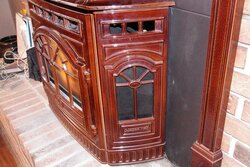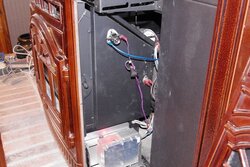earlll said:Wow, 306 BTU/hr is about the same heat as a 100W incandescent bulb emits?
Not really sure earlll,
Remember though, this was only for 3 of the 'cooler' surfaces that I measured and determined to be worth calculating. Also I'm not guaranteeing that these numbers are 100% accurate. It seems to be fairly accurate, though there is really nothing to check it against.






 :coolgrin: Heat is heat and it is contributing to the environment around the stove. If you measure the surface area and know it's STEADY STATE temperature, then can't you assume it is losing as much heat energy to the surroundings as it is absorbing to maintain that temperature? He can do what ever he wants but if he wants an accurate number then you have to take into account ALL TYPES of heat generation, don't you. He clearly doesn't know yet how the stove operates so wouldn't that be the first thing to learn to better understand how the heat is generated? Jumping feet first into a theoretical analysis without knowing how a machine operates is NOT the way to start.
:coolgrin: Heat is heat and it is contributing to the environment around the stove. If you measure the surface area and know it's STEADY STATE temperature, then can't you assume it is losing as much heat energy to the surroundings as it is absorbing to maintain that temperature? He can do what ever he wants but if he wants an accurate number then you have to take into account ALL TYPES of heat generation, don't you. He clearly doesn't know yet how the stove operates so wouldn't that be the first thing to learn to better understand how the heat is generated? Jumping feet first into a theoretical analysis without knowing how a machine operates is NOT the way to start.